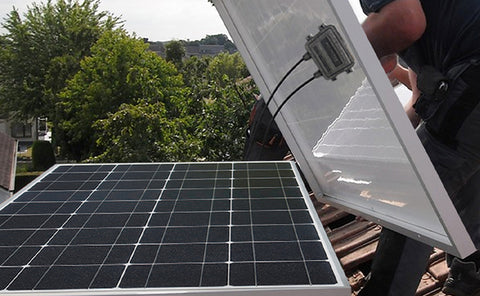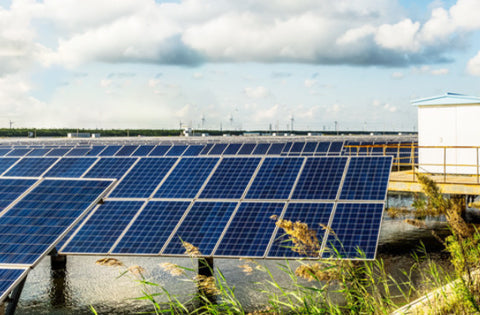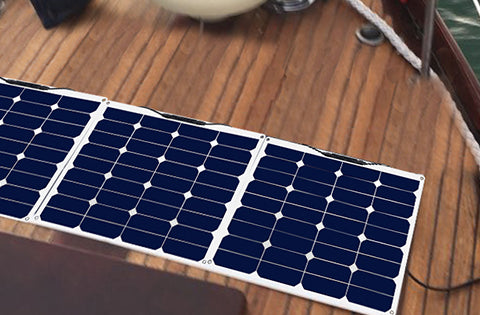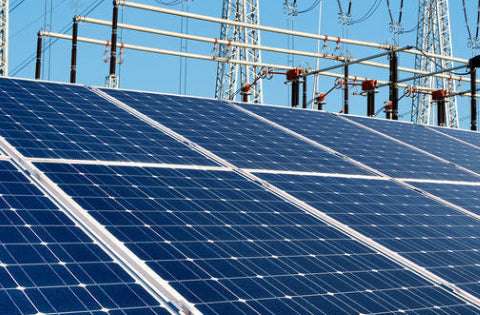Generally speaking, there are a large number of photovoltaic modules in photovoltaic power stations. Although the probability of failure of photovoltaic power station modules is very small, it is still necessary to avoid unnecessary economic and property losses due to negligence in management and inspection. For this reason, the following describes the common problems and solutions in photovoltaic system, hoping to help you!
1:Hot spot effect
The quality problems of photovoltaic modules are mostly caused by excessive internal resistance, cracks and some surface shadows. The occurrence of such phenomena will induce hot spot effect, seriously damage photovoltaic modules or systems, and even cause fire accidents. In case of hot spots, it is generally difficult to find them only by visual inspection, and it is best to use a special infrared thermal imager for inspection (supplementary note: fluke vt06/vt08 portable infrared thermal imager is small and powerful; it can quickly and accurately find hot spots in one shot; it is dust-proof, waterproof and fall proof, fearless of harsh environment, and helps to quickly find hot spots).
2:Fail to meet the expected power generation
The peak sunshine hours (i.e. the hours that can reach 1000 watts per square meter of solar modules per day) are an important standard to measure solar energy resources. The peak sunshine hours will be affected by many factors, especially time, season and weather conditions. Therefore, the installation position and angle of solar modules play a vital role in generating electricity.

Usually, even if installed correctly, the photovoltaic system may not achieve the expected power generation. It is necessary to measure its electrical parameters and the actual power output of components, and check whether its working performance meets the design requirements. Use the combination of solar irradiance meter and multi-function tester to calculate the IV curve of power output, Evaluate whether the irradiation angle of the current module reaches the best position
(supplementary note: fluke IRR1-SOL solar irradiance meter can support the measurement of 1400 w/ ㎡ instantaneous irradiance; support the measurement of ambient temperature and panel temperature; built-in compass can measure the direction and component inclination. It can effectively simplify the installation, commissioning and fault diagnosis steps and time of photovoltaic modules).
In addition to the electrical faults in the photovoltaic system, the troubleshooting and maintenance methods of the photovoltaic panel mostly lie in the inverter, components or modules, which is manifested in other electrical faults in the photovoltaic system.
Photovoltaic load failure
- Check whether the voltage at the load connection is correct. If the voltage is too low, you may need to reduce the circuit load or use larger wires.
- Check the fuse and circuit breaker. If there is any problem, replace the faulty fuse / circuit breaker.
- If the load is a motor, the internal thermal circuit breaker may trip, or the winding in the motor may be open circuit. You need to replace another load and see if it works properly.
Photovoltaic grounding fault
DC grounding fault is a common fault type in photovoltaic system, which is usually caused by the current flowing through the equipment grounding wire due to the damage of the insulation layer of the grounding wire, improper installation, wire clamping and water inflow.

DC ground faults are particularly dangerous in large photovoltaic systems because they are not easy to find and do great harm. Ground fault protection (GFP) equipment cannot detect small current leakage (< 1a) in ground faults, which is called "blind spot". Once a fault occurs, it will not only cause safety problems, but also fire hazards.
Learn more common problems and solutions of PV system, please pay attention to SOLARPARTS official website:
Twitter: Solarparts Instagram: Solarparts
Tumblr: Solarparts Pinterest: Solarparts
Facebook: Shenzhen Solarparts Inc
Email address: Philip@isolarparts.com
Homepage: www.isolarparts.com



